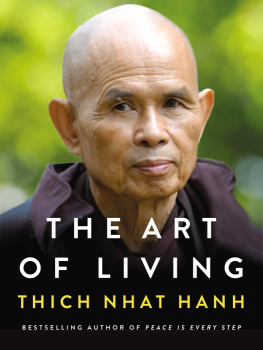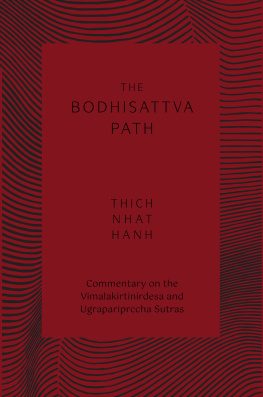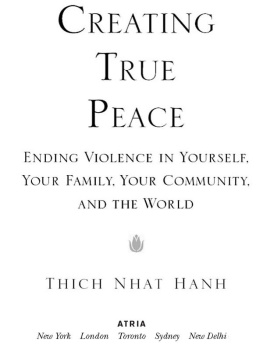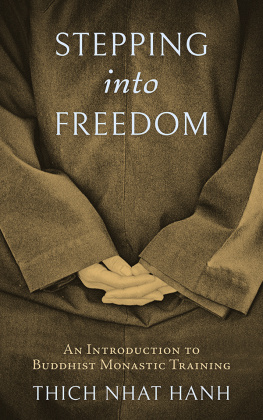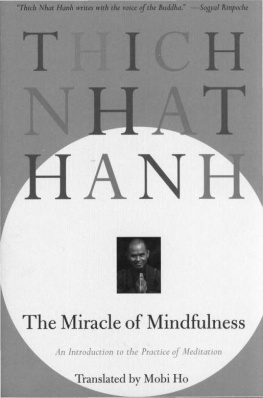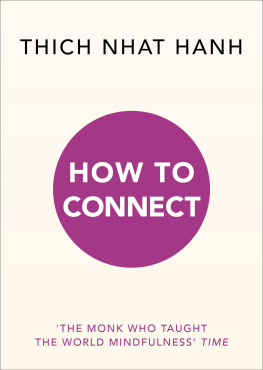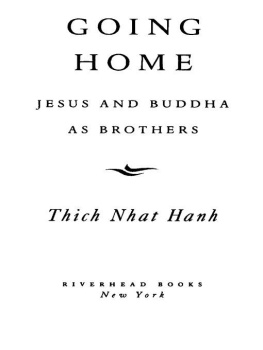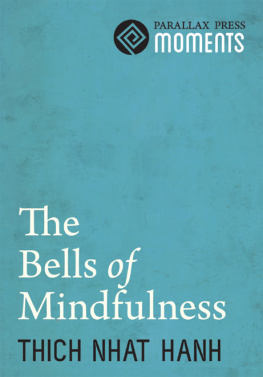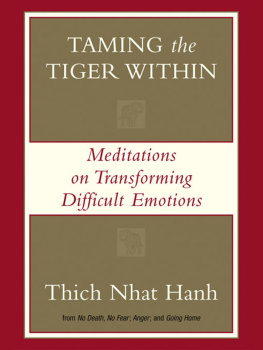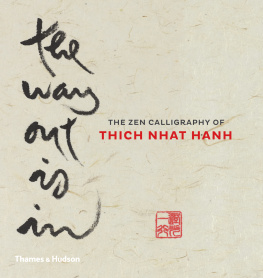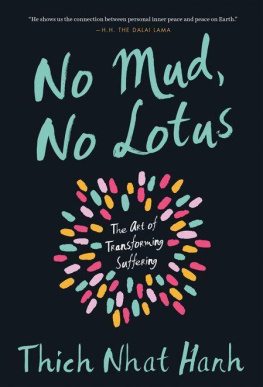I first heard Thich Nhat Hanh teach in 1959 at the Xa Loi Temple in Saigon. I was a university student, full of questions about life and Buddhism. Although he was a young monk, he was already a renowned poet and accomplished scholar. That first lecture deeply impressed me. I had never heard anyone speak so beautifully and profoundly. I was struck by his learning, his wisdom, and his vision for a very practical Buddhism, deeply rooted in ancient teachings yet relevant to the needs of our time. I was already actively engaged in social work in the slums and dreamed of relieving poverty and fostering social change. Not everyone supported my dream, but Thay (as we liked to call Thich Nhat Hanhthe fond Vietnamese term for Teacher) was very encouraging. He told me that he was sure anyone could touch awakening in whatever work he or she enjoyed the most. The most important thing, he said, is to just be ourselves and live our lives as deeply and mindfully as we can. I knew I had found the teacher I was looking for.
Over the last fifty-five years, I have had the privilege of studying and working with Thich Nhat Hanh, organizing social work programs in Vietnam, conducting peace work in Paris, rescuing boat people from the high seas, and helping him establish mindfulness practice centers in Europe, the US, and Asia. I have witnessed Thays teachings evolve and deepen, adapting to the ever-changing needs and challenges of our times. He has always eagerly engaged in dialogue with leaders in science, health, politics, education, business, and technology, so he can deepen his understanding of our current situation and develop mindfulness practices that are appropriate and effective. Right up to his unexpected stroke in November 2014, at the age of eighty-eight, Thay continued to have extraordinary new insights into fundamental Buddhist teachings. Sometimes, with great delight, he would return from a walking meditation, pick up his brush, and capture these insights in short calligraphy phrasesmany of which are included in these pages.
This remarkable book, edited by his monastic students, captures the essence of the last two years of Thays lectures on the art of mindful living. In particular, it presents his groundbreaking teachings from a twenty-one-day retreat in June 2014, at Plum Village Mindfulness Practice Center in France, on the theme: What Happens When We Die? What Happens When We Are Alive?
I never cease to be deeply moved by the ways in which Thay truly embodies his teachings. He is a master of the art of living. He cherishes life and, despite all the adverse conditions he has encountered over the yearsincluding war, exile, betrayal, and ill healthhe has never given up. He has taken refuge in his breathing and in the wonders of the present moment. Thay is a survivor. He has survived thanks to the love of his students and his community, and thanks to the nourishment he receives from his meditation, mindful breathing, and relaxing moments walking and resting in nature. In times of war and hardship, as well as in times of peace and harmony, I have seen how the wisdom you find in these pages has enabled Thay to embrace lifes joys and pains with fearlessness, compassion, faith, and hope. I wish you all every success in applying the teachings in this book in your own life, following in his footsteps, so you may bring healing, love, and happiness to yourselves, your family, and the world.
Sister Chan Khong
Were so close to Earth that sometimes we forget how beautiful it is. Seen from space, our blue planet is remarkably alivea living paradise suspended in a vast and hostile cosmos. On the first trip to the moon, astronauts were stunned to see Earth rise above the moons desolate horizon. We know that on the moon there are no trees, rivers, or birds. No other planet has yet been found to have life as we know it. It is reported that astronauts orbiting high up in space stations spend most of their free time contemplating the breathtaking sight of Earth far below. From a distance, it looks like one giant living, breathing organism. Seeing its beauty and wonder, astronauts feel great love for the whole Earth. They know billions of people are living out their lives on this little planet, with all their joy, happiness, and suffering. They see violence, wars, famine, and environmental destruction. At the same time, they see clearly that this wonderful little blue planet, so fragile and precious, is irreplaceable. As one astronaut put it, We went to the moon as technicians; we returned as humanitarians.
Science is the pursuit of understanding, helping us to understand distant stars and galaxies, our place in the cosmos, as well as the intimate fabric of matter, living cells, and our own bodies. Science, like philosophy, is concerned with understanding the nature of existence and the meaning of life.
Spirituality is also a field of research and study. We want to understand ourselves, the world around us, and what it means to be alive on Earth. We want to discover who we really are, and we want to understand our suffering. Understanding our suffering gives rise to acceptance and love, and this is what determines our quality of life. We all need to be understood and to be loved. And we all want to understand and to love.
Spirituality is not religion. It is a path for us to generate happiness, understanding, and love, so we can live deeply each moment of our life. Having a spiritual dimension in our lives does not mean escaping life or dwelling in a place of bliss outside this world but discovering ways to handle lifes difficulties and generate peace, joy, and happiness right where we are, on this beautiful planet.
The spirit of practicing mindfulness, concentration, and insight in Buddhism is very close to the spirit of science. We dont use expensive instruments but rather our clear mind and our stillness to look deeply and investigate reality for ourselves, with openness and non-discrimination. We want to know where we come from and where we are going. And most of all, we want to be happy. Humanity has given rise to many talented artists, musicians, and architects, but how many of us have mastered the art of creating a happy momentfor ourselves and those around us?
Like every species on Earth, we are always seeking the ideal conditions that will allow us to live to our fullest potential. We want to do more than just survive. We want to live. But what does it mean to be alive? What does it mean to die? What happens when we die? Is there life after death? Is there reincarnation? Will we see our loved ones again? Do we have a soul that goes to heaven or nirvana or God? These questions are in everyones hearts. Sometimes they become words, and sometimes they are left unsaid, but they are still there, pulling at our hearts every time we think about our life, about those we love, our sick or ageing parents, or those who have already passed away.
How can we begin to answer these questions about life and death? A good answer, the right answer, should be based on evidence. It is not a question of faith or belief, but of looking deeply. To meditate is to look deeply and see the things that others cannot see, including the wrong views that lie at the base of our suffering. When we can break free from these wrong views, we can master the art of living happily in peace and freedom.
The first wrong view we need to liberate ourselves from is the idea that we are a separate self cut off from the rest of the world. We have a tendency to think we have a separate self that is born at one moment and must die at another, and that is permanent during the time we are alive. As long as we have this wrong view, we will suffer; we will create suffering for those around us, and we will cause harm to other species and to our precious planet. The second wrong view that many of us hold is the view that we are only this body, and that when we die we cease to exist. This wrong view blinds us to all the ways in which we are interconnected with the world around us and the ways in which we continue after death. The third wrong view that many of us have is the idea that what we are looking forwhether it be happiness, heaven, or lovecan be found only outside us in a distant future. We may spend our lives chasing after and waiting for these things, not realizing that they can be found within us, right in the present moment.

